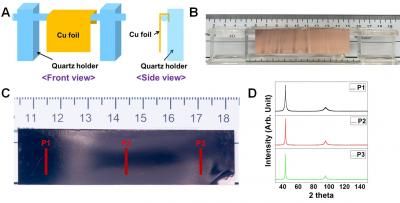This idea doesn't stink: New tech cuts industrial odors, pollutants
Advertisement
A North Carolina State University researcher has devised a new technology that really does not stink. In fact, it could be the key to eliminating foul odors and air pollutants emitted by industrial chicken rendering facilities and – ultimately – large-scale swine feedlots.
Dr. Praveen Kolar, assistant professor of biological and agricultural engineering at NC State, has developed an inexpensive treatment process that significantly mitigates odors from poultry rendering operations. Rendering facilities take animal byproducts (e.g., skin, bones, feathers) and process them into useful products such as fertilizer. However, the rendering process produces extremely foul odors.
These emissions are not currently regulated by the government, but the smell can be extremely disruptive to a facility's community. The industry currently uses chemical "scrubbers" to remove odor-causing agents, but this technique is not very effective, Kolar says. Furthermore, some of the odor-causing compounds are aldehydes, which can combine with other atmospheric compounds to form ozone – triggering asthma attacks and causing other adverse respiratory health effects.
Kolar, working with his co-author Dr. James Kastner at the University of Georgia, has designed an effective filtration system that takes advantage of catalytic oxidation to remove these odor-causing pollutants. Specifically, the researchers use ozone and specially-designed catalysts to break down the odor-causing compounds. This process takes place at room temperature, so there are no energy costs, and results in only two byproducts: carbon dioxide and pure water.
The researchers developed the catalysts by coating structures made of activated carbon with a nanoscale film made of cobalt or nickel oxides, Kolar says. "We used activated carbon because its porous structure gives it an extremely large surface area," Kolar explains, "meaning that there is more area that can be exposed to the odorous agents." The cobalt and nickel oxide nanofilms make excellent catalysts, Kolar explains, "because they increase the rate of the chemical reaction between the odor-causing compounds and the ozone, making the process more efficient. They are also metals that are both readily available and relatively inexpensive."
Kolar says his next goal is to apply this research to industrial hog farms. "This technology could be applied to swine operations to address odors and ammonia emissions," Kolar says. "My next step is to try to pursue this research on a large scale."
Most read news
Topics
Organizations
Other news from the department research and development

Get the chemical industry in your inbox
By submitting this form you agree that LUMITOS AG will send you the newsletter(s) selected above by email. Your data will not be passed on to third parties. Your data will be stored and processed in accordance with our data protection regulations. LUMITOS may contact you by email for the purpose of advertising or market and opinion surveys. You can revoke your consent at any time without giving reasons to LUMITOS AG, Ernst-Augustin-Str. 2, 12489 Berlin, Germany or by e-mail at revoke@lumitos.com with effect for the future. In addition, each email contains a link to unsubscribe from the corresponding newsletter.
































































